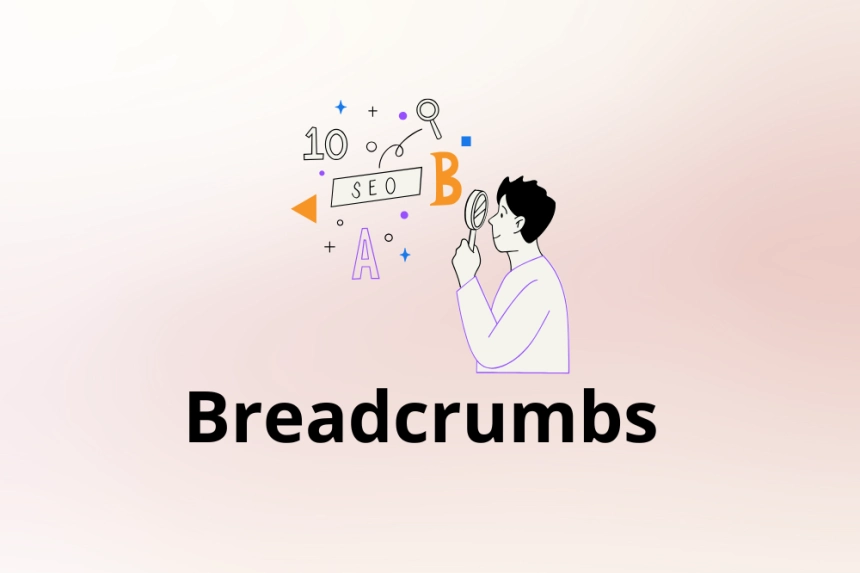What are Breadcrumbs and How Do They Affect SEO?


Breadcrumbs are a navigation element that shows the hierarchy of a website and the current location of a user within that hierarchy. They are a fundamental tool for enhancing user experience and optimizing the SEO of a webpage. In this article, we will explore what breadcrumbs are in detail, their importance, and how they affect SEO.
What are Breadcrumbs?
Breadcrumbs are navigation links that allow users and search engines to understand the relationship between different pages of a website. They are typically presented as a list of links that display the path the user has followed to reach a specific page. For example:
Home > Category > Subcategory > Current Page
Types of Breadcrumbs
There are three main types of breadcrumbs:
- Location Breadcrumbs: Show the user's location within the structure of the website. For example: Home > Products > Electronics > Televisions.
- Navigation Breadcrumbs: Indicate the path the user has taken to reach a specific page. They are useful for users who want to return to a previous page.
- Attribute Breadcrumbs: Use product attributes or features to facilitate navigation. For example: Home > Clothing > T-Shirts > Cotton T-Shirts.
Importance of Breadcrumbs
Breadcrumbs serve several important functions:
Improves User Experience
Breadcrumbs allow users to easily navigate through a website. By providing a clear navigation path, users can return to previous levels of the hierarchy without having to use the back button on their browser. This enhances usability and user satisfaction.
Aids in Content Indexing
Search engines use breadcrumbs to better understand the structure of a website. They provide context regarding the relationship between different pages, which helps search engines index content more efficiently.
How Breadcrumbs Affect SEO
Site Structure
A well-structured breadcrumb system can have a positive impact on search engine optimization (SEO). By organizing content hierarchically, it makes it easier for both users and search engines to find and access relevant content.
Improves Click-Through Rate (CTR)
Breadcrumbs can appear in search results, enhancing the appearance of a result list. When users see a clear navigation structure, they are more likely to click on the link. A better click-through rate can positively affect a page's ranking in search engines.
Rich Snippets
Search engines, like Google, may display breadcrumbs in search results as part of rich snippets. This not only enhances the visibility of a site but also helps users quickly understand the content structure before clicking.
How to Implement Breadcrumbs on Your Website
Implementing breadcrumbs on your website is relatively straightforward and can be done in various ways. Here’s a basic approach:
HTML
Use an unordered list (<ul>) to structure your breadcrumbs:
<nav aria-label="Breadcrumbs">
<ul>
<li><a href="/">Home</a></li>
<li><a href="/products">Products</a></li>
<li><a href="/products/electronics">Electronics</a></li>
<li>Televisions</li>
</ul>
</nav>Schema Markup
To ensure search engines recognize your breadcrumbs, use Schema Markup. This can be done by adding the following JSON-LD code to the <head> section of your HTML:
{
"@context": "https://schema.org",
"@type": "BreadcrumbList",
"itemListElement": [
{
"@type": "ListItem",
"position": 1,
"name": "Home",
"item": "https://www.yoursite.com/"
},
{
"@type": "ListItem",
"position": 2,
"name": "Products",
"item": "https://www.yoursite.com/products"
},
{
"@type": "ListItem",
"position": 3,
"name": "Electronics",
"item": "https://www.yoursite.com/products/electronics"
},
{
"@type": "ListItem",
"position": 4,
"name": "Televisions",
"item": "https://www.yoursite.com/products/electronics/televisions"
}
]
}Conclusion
Breadcrumbs are an essential tool in modern web design that benefits both users and search engines. Their proper implementation can improve site navigation, increase click-through rates, and optimize SEO. By considering their use, you can make your website more accessible and effective, enhancing user experience and facilitating indexing by search engines.
Implementing breadcrumbs in your web design is not only a best practice but can also have a significant impact on organic traffic and site performance. As you work on optimizing your website, be sure to consider this valuable navigation element.






